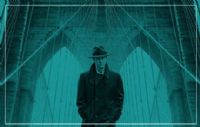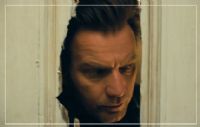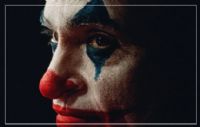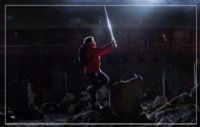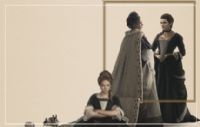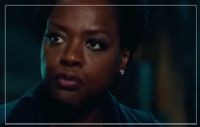Werner Herzog's Nosferatu The Vampyre
Date: 21/05/2014
Movie Review
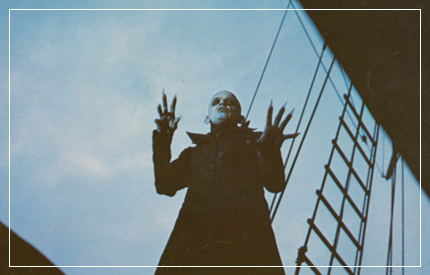
Current conventional wisdom unconditionally bemoans the stream of Hollywood and horror remakes spewing into cinemas across the UK, and indeed the world, however, not all remakes are necessarily bad. Take, for example, John Carpenter's gore-tastic sci-fi suspense The Thing – undoubtedly an improvement on the relatively tame and drawn-out Howard Hawks original.
To this list of successful and acclaimed re-workings can surely be added Werner Herzog's Nosferatu The Vampyre; itself a re-imagining of F.W. Murnau's unsettling 1922 silent classic, based on Bram Stoker's Dracula.
Indeed, unshifting critics of 'the remake' should bear in mind that Herzog's celebrated contribution to the vampire sub-genre is itself a remake of a film that was inspired by a book. So much for the purity of originality...
The story begins when Harker, an estate agent living with his wife in the small village of Wismar, ventures deep into the wilderness of the Carpathian Mountains to close a property deal with one Count Dracula. The locals speak of demons and spectres and of the perils that await those who step inside the mysterious count's home, but Harker pays no heed. When he knocks at Dracula's door, he is met by a wisened, frail shadow of a man dressed entirely in black, who welcomes him in and offers a meal and a bed for the night.
When Harker accidentally cuts himself during dinner, the sight of blood on the young man's hand immediately affects the count's behaviour, causing him to stalk his dinner guest across the room, before forcing him into a chair and disappearing for the night.
After a series of restless nightmares, Harker realises that his host may be hiding a dark, deadly secret, and that his wife Lucy, and their little village home, may be doomed forever.
Starring the great Klaus Kinski as the vampiric count, Bruno Ganz as male lead Jonathan Harker and the marvellous Isabelle Adjani as his wife Lucy, the film succeeds in creating a wholly unsettling tone from the offset, yet manages to maintain cinematic elegance and an expressionistic aesthetic.
As a nod to F.W. Murnau's silent-era adaptation of the classic vampire novel, Herzog's contemporary update on the 'Nosferatu' story is awash with expressionist motifs. The use of light and dark is particularly mesmerising, especially in the framing of Count Dracula's pale, decrepit features set against the backdrop of his dark, cavernous abode.
Kinski's vampire is truly terrifying, particularly during his introductory scenes with Harker. The performance harks back to silent-era filmmaking, such is the mastery of Kinski's facial features in conveying the count's thoughts and emotions to the audience. Every iota of muscle movement or piercing stare is fully under the actor's control, as Kinski brings the carnivorous ghoul's dark, yet tormented soul alive on-screen.
Similarly brilliant is Isabelle Adjani, who plays Harker's wife Lucy. Her pale skin and deep-set features mirror the light/shade contrast evident in Kinski's Dracula and add to the overarching Gothic aesthetic that the film sustains throughout. Lucy's final encounter with Dracula at the film's close is a masterpiece basked in light and shadow, and one of the film's enduring images.
Bruno Ganz makes an effective, yet rather subdued turn as Jonathan Harker. His character's reactions to the Count's erratic, unpredictable behaviour can be at times puzzling, as the events unfolding in front of him seem to warrant more action than is delivered. But Harker's apparent stillness in the face of terror is a testament to the sense of expressionist, theatrical performance in the film. Every character is a puppet being pulled by Herzog's strings, existing only to fulfil his directorial vision.
The film, on a whole, is bleak, cold and dark, yet dazzling and artistic. Herzog's vision is at once elegant and horrifying, but with all the intricacy and spectacle of a Gothic facade. This is aided in no small part by Popul Vuh's ethereal, foreboding soundtrack, which perpetuates a sense of doom as the narrative unfolds and the characters' worlds unravel around them. The film and story in general is awash with subtextual readings - domesticity, plague, blood-letting, modernism – but the overall feeling is that Herzog is only concerned with the immediacy of the aesthetic, and of a startling contrast between light and dark, night and day, good and evil, purity and corruption, which the film delivers in spades.
Iain Todd
Werner Herzog's Nosferatu The Vampyre is available now on Blu Ray
The Werner Herzog Collection box-sets, which span 20 years of the director’s career from 1967 – 1987, will be released on 21 July on Blu-ray (8 discs) and DVD (7 discs).
bfi.org.uk/shop
To this list of successful and acclaimed re-workings can surely be added Werner Herzog's Nosferatu The Vampyre; itself a re-imagining of F.W. Murnau's unsettling 1922 silent classic, based on Bram Stoker's Dracula.
Indeed, unshifting critics of 'the remake' should bear in mind that Herzog's celebrated contribution to the vampire sub-genre is itself a remake of a film that was inspired by a book. So much for the purity of originality...
The story begins when Harker, an estate agent living with his wife in the small village of Wismar, ventures deep into the wilderness of the Carpathian Mountains to close a property deal with one Count Dracula. The locals speak of demons and spectres and of the perils that await those who step inside the mysterious count's home, but Harker pays no heed. When he knocks at Dracula's door, he is met by a wisened, frail shadow of a man dressed entirely in black, who welcomes him in and offers a meal and a bed for the night.
When Harker accidentally cuts himself during dinner, the sight of blood on the young man's hand immediately affects the count's behaviour, causing him to stalk his dinner guest across the room, before forcing him into a chair and disappearing for the night.
After a series of restless nightmares, Harker realises that his host may be hiding a dark, deadly secret, and that his wife Lucy, and their little village home, may be doomed forever.
Starring the great Klaus Kinski as the vampiric count, Bruno Ganz as male lead Jonathan Harker and the marvellous Isabelle Adjani as his wife Lucy, the film succeeds in creating a wholly unsettling tone from the offset, yet manages to maintain cinematic elegance and an expressionistic aesthetic.
As a nod to F.W. Murnau's silent-era adaptation of the classic vampire novel, Herzog's contemporary update on the 'Nosferatu' story is awash with expressionist motifs. The use of light and dark is particularly mesmerising, especially in the framing of Count Dracula's pale, decrepit features set against the backdrop of his dark, cavernous abode.
Kinski's vampire is truly terrifying, particularly during his introductory scenes with Harker. The performance harks back to silent-era filmmaking, such is the mastery of Kinski's facial features in conveying the count's thoughts and emotions to the audience. Every iota of muscle movement or piercing stare is fully under the actor's control, as Kinski brings the carnivorous ghoul's dark, yet tormented soul alive on-screen.
Similarly brilliant is Isabelle Adjani, who plays Harker's wife Lucy. Her pale skin and deep-set features mirror the light/shade contrast evident in Kinski's Dracula and add to the overarching Gothic aesthetic that the film sustains throughout. Lucy's final encounter with Dracula at the film's close is a masterpiece basked in light and shadow, and one of the film's enduring images.
Bruno Ganz makes an effective, yet rather subdued turn as Jonathan Harker. His character's reactions to the Count's erratic, unpredictable behaviour can be at times puzzling, as the events unfolding in front of him seem to warrant more action than is delivered. But Harker's apparent stillness in the face of terror is a testament to the sense of expressionist, theatrical performance in the film. Every character is a puppet being pulled by Herzog's strings, existing only to fulfil his directorial vision.
The film, on a whole, is bleak, cold and dark, yet dazzling and artistic. Herzog's vision is at once elegant and horrifying, but with all the intricacy and spectacle of a Gothic facade. This is aided in no small part by Popul Vuh's ethereal, foreboding soundtrack, which perpetuates a sense of doom as the narrative unfolds and the characters' worlds unravel around them. The film and story in general is awash with subtextual readings - domesticity, plague, blood-letting, modernism – but the overall feeling is that Herzog is only concerned with the immediacy of the aesthetic, and of a startling contrast between light and dark, night and day, good and evil, purity and corruption, which the film delivers in spades.
Iain Todd
Werner Herzog's Nosferatu The Vampyre is available now on Blu Ray
The Werner Herzog Collection box-sets, which span 20 years of the director’s career from 1967 – 1987, will be released on 21 July on Blu-ray (8 discs) and DVD (7 discs).
bfi.org.uk/shop
More info : http://www.bfi.org.uk/shop





























